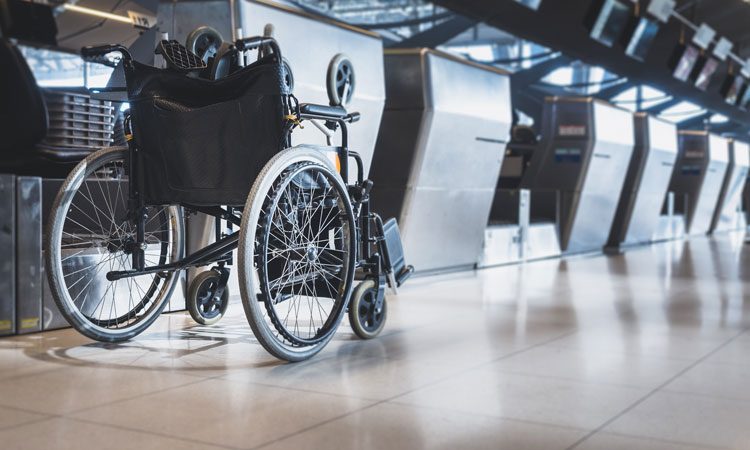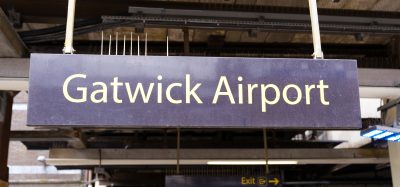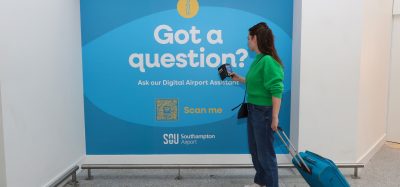Passengers with additional needs require consistent standards
- Like
- Digg
- Del
- Tumblr
- VKontakte
- Buffer
- Love This
- Odnoklassniki
- Meneame
- Blogger
- Amazon
- Yahoo Mail
- Gmail
- AOL
- Newsvine
- HackerNews
- Evernote
- MySpace
- Mail.ru
- Viadeo
- Line
- Comments
- Yummly
- SMS
- Viber
- Telegram
- Subscribe
- Skype
- Facebook Messenger
- Kakao
- LiveJournal
- Yammer
- Edgar
- Fintel
- Mix
- Instapaper
- Copy Link
Posted: 17 September 2019 | Gatwick Airport | No comments yet
Gatwick Airport looks at how the UK’s proposed Passenger Charter is an opportunity to introduce consistent standards for passengers with reduced mobility across the entire airport journey.


THE UK’S LONG-TERM vision of aviation is set out in its Aviation 2050 Green Paper and one proposal it contains is for a Passenger Charter to strengthen airports’ and airlines’ customer experience.
This would build on the good work already being done by airports in this area and seeks to improve the airport experience for passengers with reduced mobility.
Lots of good work has been done here, but the Charter could be an opportunity to introduce some truly consistent standards across all airport stakeholders as this is where things often go wrong and disabled passengers experience poor service.
To be truly effective in helping passengers with a disability, any new standards must apply to every organisation that comes into contact with the passenger during their journey, be they an airport, airport partner, airline or handling agent.
This is key, as during a journey a passenger will deal with various organisations and poor service at any point can ruin the entire experience.
Airports are often fragmented environments where hundreds of different organisations can be based on a single campus. Ensuring consistent standards can therefore be a challenge but a broad-based charter may help bring these often-disparate parties together.
Critically, it will be the promotion of a consistent level of service across the passenger journey that will enable the Charter to drive meaningful change, and not a singular fixation on easy-to-measure metrics such as waiting times. Passengers value how they are treated, not just the time in which it takes to complete one part of a journey.
Similarly, the Charter must not lead to significant cost increases for passengers, as this could have the unintended consequence of excluding certain demographics from travelling altogether.
The Gatwick family
One way we are driving consistent and meaningful change across the airport is through the ‘Gatwick Family’ initiative. In a nutshell, the initiative is looking to unite the entire 30,000-strong workforce, whether they work for Gatwick, an airline, ground handler, retailer or caterer with the aim of building closer, more productive relationships with each other.
Not only does this make Gatwick a better place to work, it is helping us deliver better journeys for the airport’s 46 million annual passengers.
Through this collaborative, campus-wide approach we have already become more effective at tackling disruptive passengers. People causing trouble are only a tiny fraction of the airport’s 46 million passengers, but just one individual can cause disproportionate harm once on board an aircraft.
Through the Gatwick Family initiative, we have raised awareness of the issue and created a network of staff – in bars, restaurants, terminals and shops – that report incidents of disruptive behaviour early, before they potentially escalate.
We have also significantly improved diversity awareness among all staff. The initiative however has been particularly important in our efforts to ensure that we are delivering consistent standards for passengers with a disability, be it physical or hidden.
Staff training is key
A fundamental part of our efforts to become the UK’s most accessible airport was to train all frontline staff to recognise which passengers might need a little extra help. We rolled out training on a range of hidden disabilities and all staff are now able to recognise and confidently deliver appropriate help to passengers who require assistance in an empathetic and positive way. We provide this training ourselves and free of charge for other organisations across the airport campus, including airlines and ground handlers, to drive consistent standards across the passenger journey.
At the time of writing, over 2,500 staff across at least 14 different businesses on the airport campus have received training to recognise and help people with dementia alone.
We also introduced the UK’s first hidden disability lanyard scheme which is a discreet signal that the person wearing it may need a little extra help and support when passing through the airport.
Thanks to the relationships built through the Gatwick Family and our widespread free training programme, the lanyard is now widely recognised across the airport campus so staff know what to do if they see a passenger wearing one.
Such has been the success of the scheme, that not only is it being used by every major airport in the UK, it is being adopted by many international airports and is also being picked up in different industries – rail, shopping complexes, cinemas, hospitals, major supermarkets – with interest continuing to grow.
Gatwick has encouraged this consistency of approach by supplying training slides, posters, graphics and photos for free, so that everyone uses the same symbol.
Talk to the experts
It is also important that discussions are not limited to organisations on the airport campus. We have been careful to work closely with disability and passenger groups to define our new, improved service standards in partnership with them. Our training is also written in conjunction with both disability charities and individuals with relevant disabilities. People living with disabilities also attend or deliver training where practical and we have found that this really brings the issue to life for staff being trained and helps make it both meaningful and memorable.
These relationships with disability charities have also helped us design new infrastructure – another key component to a good passenger journey. We recently became the first UK airport to open a sensory room following close consultation with the National Autistic Society, and our design teams used a tool provided by the Royal National Institute of Blind to make sure the perspective of blind and visually-impaired passengers was considered when designing new facilities.
Given the large number of passengers passing through the airport we know that we will not get it right every time. However we are broadening the range of disability groups we engage with and have new feedback and learning mechanisms in place to help us constantly improve our accessibility services, facilities and training.
We are determined to do everything possible to ensure that passengers in need of assistance have an equal opportunity to fly.
The UK government is seeking views on its long-term vision of aviation – Aviation 2050 Green Paper – until 20 June 2019. The green paper outlines a new aviation strategy, including the proposal for a Passenger Charter.


















